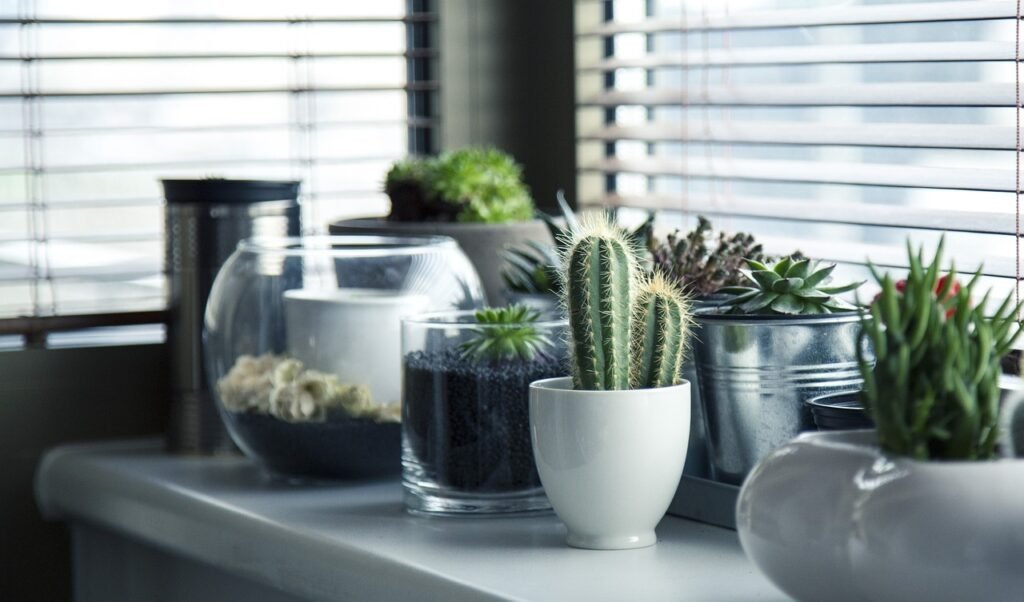
Keeping a well-kept garden requires regular maintenance and cleaning to ensure that your outdoor oasis remains a beautiful and thriving haven. From pruning and weeding to watering and fertilizing, there are a variety of tasks that need to be done to keep your garden in optimal condition. In this article, we will explore the top maintenance tasks that you should prioritize and incorporate into your gardening routine, helping you to create a flourishing and vibrant garden space that you can enjoy all year round.
Regular watering
Determining water needs
Regular watering is essential for maintaining a healthy and thriving garden. However, it is important to know how much water your plants actually need in order to avoid overwatering or underwatering them. The water needs of different plants can vary depending on factors such as the type of plant, soil conditions, and the weather.
To determine the water needs of your plants, you can start by checking the soil moisture. Simply insert your finger into the soil up to the second knuckle. If the soil feels dry at that depth, it’s time to water. Another method is to look for visual cues, such as wilted or drooping leaves, which may indicate that your plants are thirsty.
Watering the right way
When it comes to watering your garden, it’s important to do it the right way. First, make sure to water at the base of the plant, near the roots, rather than spraying water over the foliage. This will ensure that the water reaches the roots where it is needed the most.
Additionally, watering in the early morning or late afternoon is preferable, as watering during the hottest part of the day can lead to water evaporation before it has a chance to soak into the soil. It is also important to water deeply and infrequently, rather than giving your plants a light sprinkling every day. This encourages the development of deeper roots, making your plants more drought-resistant in the long run. Lastly, consider using a soaker hose or drip irrigation system to water your garden, as they are more efficient and help reduce water waste.
Weeding
Identifying and removing weeds
Weeds can quickly take over a garden if left unattended. It is essential to regularly check for and remove any weeds that may be growing among your plants. Weeds compete with your plants for nutrients, water, and sunlight, and can hinder their growth and overall health.
To identify weeds, familiarize yourself with common weed species in your area. Weeds often have different leaf shapes and colors compared to your cultivated plants. Once identified, it is best to remove weeds as soon as possible. Use a gardening tool, like a hand trowel or a weed puller, to uproot the weeds, ensuring that you remove the entire root system to prevent regrowth.
Preventing weed growth
Prevention is key when it comes to dealing with weeds. By taking proactive measures, you can reduce weed growth and save yourself from spending countless hours on weed removal. Here are some tips to prevent weeds from invading your garden:
-
Use mulch: Applying a layer of mulch around your plants helps to suppress weed growth by blocking sunlight and preventing the weed seeds from germinating. Organic mulches, such as wood chips or straw, not only provide weed control but also help improve soil health.
-
Proper spacing: Giving your plants enough space to grow will prevent overcrowding, which can create ideal conditions for weeds to thrive. Adequate spacing allows your plants to compete with weeds more effectively.
-
Regular maintenance: Stay on top of garden maintenance tasks like weeding, as removing small weeds regularly is much easier than dealing with a full-blown weed takeover. Spend a few minutes each week inspecting your garden and pulling out any emerging weeds.
-
Use weed barriers: Consider using landscape fabric or weed-blocking mulch beneath your garden beds to create a barrier that prevents weeds from penetrating the soil. This can be particularly effective in areas where weed growth is persistent.

This image is property of pixabay.com.
Pruning
Understanding the purpose of pruning
Pruning is an important gardening technique that involves removing certain parts of a plant, such as branches, roots, or buds. It serves various purposes, including improving the overall health and appearance of plants, controlling their size, and promoting better fruit or flower production.
Regular pruning helps to remove dead or damaged branches, allowing the plant to redirect its resources towards new growth and development. It also helps to shape plants, ensuring they maintain an attractive form. Furthermore, pruning can stimulate the production of more flowers or fruits by removing old or unproductive branches.
Pruning techniques for different plants
Different plants require different pruning techniques, so it’s important to know the specific requirements for each type of plant in your garden. Here are some general guidelines for pruning common types of plants:
-
Shrubs and hedges: Prune shrubs and hedges in the late winter or early spring before new growth starts. Remove dead or diseased branches, as well as any crossing or rubbing branches. Trim back excessive growth to maintain the desired size and shape.
-
Trees: Prune trees during their dormant season, typically in the late winter or early spring. Remove any dead, damaged, or diseased branches. When pruning larger tree limbs, make sure to use proper pruning techniques to avoid causing damage to the tree.
-
Fruit trees: Prune fruit trees in the late winter or early spring while they are still dormant. Remove any dead or diseased branches, as well as any branches that are growing towards the center of the tree. Thin out excess growth to improve air circulation and promote better fruit production.
-
Roses: Prune roses in the early spring before new growth begins. Remove any dead or damaged wood, as well as any branches that are crossing or rubbing against each other. Cut back the remaining branches to shape the rose bush and encourage new growth.
Remember to always use clean and sharp pruning tools to minimize the risk of spreading diseases between plants. If you are unsure about how to prune a specific plant, consult a gardening guide or seek advice from a knowledgeable gardener.
Fertilizing
Knowing when and how to fertilize
Proper fertilization plays a crucial role in ensuring the health and vigor of your garden plants. Fertilizers provide essential nutrients that may be lacking in the soil, promoting optimal growth and development. However, it is important to know when and how to fertilize to avoid overloading the plants with nutrients or causing harm to the environment.
One of the key factors when deciding when to fertilize your plants is the specific type of plant. Some plants may benefit from regular feeding throughout the growing season, while others may only require fertilization once or twice a year. Additionally, consider the soil conditions and the nutritional needs of the plants. Soil testing can help determine the nutrient levels in your soil and guide you in choosing the appropriate fertilizer.
Choosing the right fertilizer
When it comes to choosing a fertilizer, there are multiple options available. The three main macronutrients required by plants are nitrogen (N), phosphorus (P), and potassium (K). Fertilizers are often labeled with three numbers representing the concentration of these nutrients, known as the NPK ratio. For example, a fertilizer labeled with 10-10-10 contains 10% nitrogen, 10% phosphorus, and 10% potassium.
Different plants have different nutrient requirements, so it is important to choose a fertilizer that matches their needs. For example, leafy green vegetables often require a higher nitrogen content to support their vigorous leaf growth, while flowering plants may benefit from a fertilizer with a higher phosphorus content to encourage blooming. Organic fertilizers, such as compost or manure, are also popular options as they provide slow-release nutrients and enhance soil health.
Always follow the instructions on the fertilizer packaging and apply the recommended amount. Over-fertilizing can lead to nutrient imbalances, environmental pollution, and damage to plants. It is also important to water your plants thoroughly after applying fertilizer to help distribute the nutrients into the soil.

This image is property of pixabay.com.
Mulching
Benefits of mulching
Mulching is a simple but effective practice that can greatly benefit your garden. By applying a layer of organic or inorganic material around your plants, you can enjoy a range of advantages.
-
Moisture conservation: Mulch acts as a protective layer, reducing moisture evaporation from the soil and helping to maintain a more stable soil moisture level. This can be particularly useful during hot and dry periods, reducing the need for frequent watering.
-
Weed suppression: Mulch helps smother weed growth by blocking sunlight, preventing weed seeds from germinating, and competing with existing weeds for resources. This greatly reduces the time and effort spent on weeding.
-
Temperature regulation: Mulch acts as insulation, protecting the soil from extreme temperature fluctuations. This is especially important during winter, as it helps prevent freezing and thawing cycles that can damage plant roots.
Applying mulch correctly
To reap the benefits of mulching, it is important to apply it correctly. Here are some guidelines to follow:
-
Choose the right type of mulch: Organic mulches, such as wood chips, straw, or compost, are commonly used in gardens. They gradually break down and enrich the soil as they decompose. Inorganic mulches, such as plastic or gravel, provide longer-lasting weed control but do not add organic matter to the soil. Choose a mulch that suits your needs and preferences.
-
Prepare the soil: Before applying mulch, make sure the soil is weed-free and adequately moist. Pull out any existing weeds and water the plants thoroughly.
-
Apply an appropriate thickness: Apply a layer of mulch around your plants, ensuring a thickness of 2-4 inches. Avoid piling mulch against plant stems or trunks, as this can encourage moisture retention and rot.
-
Reapply as needed: Over time, organic mulches will break down and become incorporated into the soil. As a result, they may need to be replenished. Check the mulch layer regularly and add more as necessary.
Remember that while mulch is beneficial, excessive mulching can create a habitat for pests and diseases. Take care not to pile mulch against plant stems, as this can create a moist environment that promotes rot and pest infestations.
Pest control
Identifying common garden pests
In any garden, pests can pose a threat to the health and well-being of your plants. Understanding the types of pests you may encounter is essential for effective pest control. Here are some common garden pests:
-
Aphids: These small insects feed on plant sap and can be found on the undersides of leaves. They can cause curling leaves, stunted growth, and transmit plant diseases.
-
Slugs and snails: These creatures feed on the leaves and stems of plants, leaving behind a trail of slime. They can cause significant damage, especially to young seedlings and tender foliage.
-
Caterpillars: Caterpillars are the larval stage of butterflies or moths. They feed voraciously on leaves and can defoliate plants if left unchecked.
-
Spider mites: These tiny pests suck the sap from plant leaves, causing yellowing, stippling, and leaf drop. They often create fine webs on the undersides of leaves.
Natural pest control methods
Fortunately, there are many natural and environmentally friendly methods to control garden pests without resorting to harmful chemicals. Here are some effective techniques:
-
Handpicking: For larger pests like caterpillars or slugs, simply remove them by hand and dispose of them in a bucket of soapy water.
-
Companion planting: Some plants naturally repel pests or attract beneficial insects that prey on pests. For example, planting marigolds can help deter aphids, while attracting ladybugs that feed on them.
-
Beneficial insects: Introduce beneficial insects, such as ladybugs or praying mantises, into your garden. These predators will help control pest populations naturally.
-
Neem oil: Neem oil, derived from the neem tree, is a natural pesticide that can be effective against many common garden pests. It disrupts the pests’ feeding and reproductive systems.
-
Homemade remedies: Some simple homemade remedies can help control pests. For example, a mixture of water and dish soap can be sprayed on plants to kill pests like aphids and spider mites.
Remember that achieving complete pest control may not always be possible, and a certain level of tolerance may be necessary. It is important to regularly monitor your garden for signs of pest activity and take action as needed.

This image is property of pixabay.com.
Deadheading flowers
Why deadheading is important
Deadheading is the removal of spent or faded flowers from plants. It is an important garden maintenance task that offers several benefits. By deadheading your flowers, you can:
-
Promote continued blooming: Deadheading encourages plants to produce more flowers by redirecting their energy from seed production to new growth and blooming. This can prolong the flowering period and keep your garden looking vibrant.
-
Enhance the appearance: Removing spent flowers improves the overall appearance of your plants and keeps your garden looking tidy and well-maintained. It eliminates the sight of wilted or faded blooms, making room for fresh, beautiful flowers to take their place.
-
Prevent seed dispersal: Deadheading prevents your plants from going to seed. This can be particularly desirable if you want to prevent self-seeding or if you are growing hybrid plants whose seeds may not produce plants with the same desirable traits.
-
Reduce disease and pests: Dead flowers can attract pests and may harbor fungal diseases. By removing them promptly, you can reduce the risk of these issues spreading to healthy plants.
Deadheading techniques for different flowers
Different types of flowers require different deadheading techniques. Here are some common methods:
-
Pinching: For plants with multiple flowers on a single stem, such as petunias or marigolds, pinch or cut off the entire spent flower along with a portion of the stem. This encourages bushier growth and more abundant flowering.
-
Snipping: For plants with individual flowers on separate stems, like roses or lilies, snip off the spent flower just above a set of healthy leaves or bud. Make sure to use sharp and clean pruning shears to avoid damaging the plant.
-
Shearing: Some perennial flowers, such as geraniums or salvia, benefit from shearing. Cut back the entire plant by about one-third after the first flush of blooms has faded. This promotes fresh growth and reblooming.
-
Shaking or brushing: For flowers with numerous small seeds, like marigolds or zinnias, a gentle shake or brush against the flower head can dislodge the spent blooms without the need for cutting. This method is quick and easy for mass bedding plants.
It’s worth noting that not all flowers require deadheading. Some plants, like daisies or black-eyed Susans, have attractive seed heads that can add interest to your garden. Be sure to research the specific deadheading requirements for the flowers in your garden to maximize their beauty and longevity.
Soil testing
Importance of soil testing
Soil testing is an invaluable tool for maintaining a healthy garden. It provides important information about the composition of your soil, including its pH level and nutrient content. By understanding the characteristics of your soil, you can make informed decisions about fertilization, soil amendments, and plant selection.
A soil test determines the pH level of your soil, which is a measure of its acidity or alkalinity. Different plants have different pH preferences, and maintaining the appropriate pH range can greatly impact their growth and overall health. In addition, a soil test can identify nutrient deficiencies or excesses, allowing you to adjust fertilization accordingly.
How to test soil
Testing your soil is a simple process that can be done in a few steps:
-
Obtain a soil testing kit: Soil testing kits are available for purchase at garden centers or online. These kits typically include a pH testing solution, as well as capsules or strips to test for specific nutrients.
-
Collect soil samples: Use a clean trowel or shovel to take multiple soil samples from different areas of your garden. Take samples from a depth of 6-8 inches to get an accurate representation of the soil composition.
-
Prepare the soil samples: Remove any roots, stones, or other debris from the soil samples. Mix the samples thoroughly in a clean container, then allow them to air dry.
-
Conduct the tests: Follow the instructions provided with the soil testing kit to determine the pH level and nutrient content of your soil. This may involve mixing the soil with testing solutions or inserting test strips into the soil sample.
-
Interpret the results: Once you have completed the tests, compare the results with the recommended ranges for different plants. This information can guide you in making necessary adjustments to improve the soil fertility and pH balance.
Remember to test your soil periodically, as its composition can change over time. Testing in the early spring or fall is ideal, as it allows you to make any necessary adjustments before planting.
Practicing crop rotation
Benefits of crop rotation
Crop rotation is a sustainable gardening practice that involves growing different crops in different areas of your garden each year. This rotation helps to break the life cycles of pests and diseases and maintain soil fertility. By practicing crop rotation, you can enjoy several benefits:
-
Pest and disease control: Different crops attract different pests and diseases. By rotating crops, you can disrupt the life cycles of these pests and diseases, reducing their populations and minimizing the need for chemical control methods.
-
Nutrient management: Different crops have varying nutrient requirements. By rotating crops, you can distribute nutrient demands more evenly throughout your garden, preventing nutrient depletion in specific areas. This helps maintain soil fertility and reduces the need for excessive fertilization.
-
Weed suppression: Some crops, such as cover crops or dense-rooted vegetables, can help suppress weeds by competing for resources and shading the soil. By rotating these crops, you can effectively suppress weed growth and reduce weed pressure.
-
Soil structure improvement: Different crops have different root systems and growth habits. By rotating crops, you can improve soil structure by introducing deep-rooted crops that break up compacted soil, or leguminous crops that fix nitrogen and improve soil fertility.
How to implement crop rotation
Implementing crop rotation in your garden involves planning and organizing your planting schedule. Here are some steps to follow:
-
Create a crop rotation plan: Assess the different types of crops you want to grow and divide them into different groups based on their botanical families or similar traits. Create a schedule that indicates which group will be planted in each area of your garden each year.
-
Follow a cycle: Ideally, follow a three to four-year rotation cycle, where each group of crops is grown in a different area of your garden every year. This helps to ensure that pests and diseases associated with specific crops do not build up in the same area.
-
Use cover crops: Consider incorporating cover crops into your rotation plan. Cover crops, such as legumes or grasses, can improve soil fertility, suppress weeds, and help break up compacted soil. Plant them in between your main crops or during fallow periods to provide additional benefits to your garden.
-
Keep records: Document your crop rotation plan and keep records of which crops were planted in each area of your garden each year. This will help you keep track of your rotation schedule and make any necessary adjustments in the future.
Remember that crop rotation is not a one-size-fits-all solution. It may vary depending on your specific garden conditions, the size of your garden, and the crops you choose to grow. Consider researching more about specific crops and their compatibility for an effective crop rotation plan tailored to your garden.
Preventing disease
Recognizing common garden diseases
Disease prevention is crucial for maintaining a healthy garden. Familiarizing yourself with common garden diseases will help you identify and address potential issues before they become severe. Here are some common garden diseases to watch out for:
-
Powdery mildew: This fungal disease appears as a white, powdery growth on the leaves, stems, and flowers of plants. It thrives in humid conditions and can affect a wide range of plants, including roses, cucumbers, and zucchini.
-
Tomato blight: Tomato blight is a disease caused by fungal pathogens that affect tomato plants. It causes dark, water-soaked spots on the leaves and fruits, often resulting in rot and plant decline.
-
Leaf spot diseases: Leaf spot diseases, such as Septoria leaf spot or black spot, cause black or dark brown spots on the leaves of plants. These diseases are caused by fungal pathogens and can affect a variety of plants, including roses and peonies.
-
Root rot: Root rot is a common soil-borne disease that affects the roots of plants. It is caused by various fungal pathogens and can cause stunted growth, yellowing leaves, and plant wilting. Overwatering and poorly drained soil contribute to the development of root rot.
Preventive measures for disease control
Preventing disease in your garden involves adopting good gardening practices and implementing preventive measures. Here are some strategies to consider:
-
Crop rotation: As mentioned earlier, practicing crop rotation can help break the life cycles of pests and diseases, reducing their impact on your garden.
-
Proper spacing: Providing adequate spacing between plants promotes better air circulation, reducing the risk of fungal diseases. Crowded plants are more prone to disease due to increased humidity and reduced airflow.
-
Water management: Overwatering can create favorable conditions for fungal diseases. Water your plants at the base, and avoid wetting the foliage whenever possible. Consider using drip irrigation or soaker hoses to deliver water directly to the roots.
-
Sanitation: Cleanliness is key in disease prevention. Remove and dispose of any infected plant debris promptly, as disease-causing pathogens can reside on dead plant material. Clean gardening tools between uses to avoid spreading diseases.
-
Disease-resistant varieties: When choosing plants for your garden, look for disease-resistant varieties. These are bred to be more tolerant or resistant to specific diseases, reducing the likelihood of infection.
-
Healthy soil: Maintain healthy soil by practicing good organic matter management, proper fertilization, and soil amendment techniques. A healthy soil ecosystem supports strong plant growth and helps plants resist or recover from disease.
Regular monitoring of your garden for signs of disease, such as discoloration, spots, or wilting, is essential. If you suspect a disease problem, consult a local garden center or extension service for accurate identification and advice on appropriate treatment options.
In conclusion, maintaining a well-kept garden requires regular attention to various maintenance tasks. By following the tips and techniques outlined in this article, you can ensure that your garden thrives and provides you with a beautiful and bountiful outdoor space to enjoy. Happy gardening!

